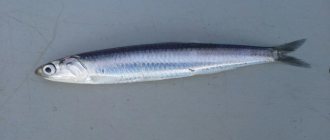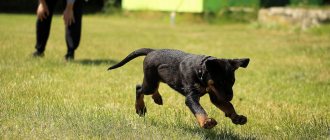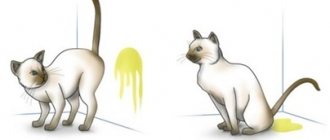The sturgeon is a large fish belonging to the ray-finned class, and their subclass is considered to be a cartilaginous ganoid.
In length, such a slave can be about 6 meters, while the weight reaches 16 kilograms.
Where does it live?
Sturgeons stay at a depth of two to one hundred meters, where there is food.
They are anadromous, semi-anadromous, and freshwater. Regardless of habitat, commercial fish eggs develop only in fresh water.
@ olgarakhm1 — depositphotos.com
Migrants live in the coastal waters of the seas, and in April-May they ascend the river to spawn, covering long distances against the current. Then the schools of fish return to the sea. Semi-anadromous species are found in the estuarine zones of the sea and spawn in the lower reaches of rivers. Most freshwater fish live and spawn in freshwater bodies of water.
More than ninety percent of the world's sturgeon stock is concentrated in the Azov and Caspian Seas. On the territory of our country, this fish is also found in the Volga, Ural, rivers of Siberia and the Far East.
paddlefish
Belongs to the order Sturgeon, a species of ray-finned fish. Found in America, in the Gulf of Mexico. The only representative of sturgeon that feeds on phytoplankton and zooplankton simultaneously. A characteristic feature of paddlefish is their constantly open mouth. Fish swim in such a state that they can take plankton and small fish into their mouths with water. The water is filtered through the gills, and the caught food enters the stomach.
paddlefish
The body of the fish has no scales. The average length is two meters, weight is 85 kilograms. The third part of the body is occupied by a paddle-shaped head, on which there is a pair of antennae. The only fin on the back is shifted towards the tail, located above the anal fin. The body color of the paddlefish is dark gray, the belly is silver.
Paddlefish have no scales
This species of sturgeon has been bred in Russia since the 70s. Adult individuals were imported from America and placed in artificial fresh water bodies. Several hundred young paddlefish were released into the Krasnodar and Voronezh reservoirs. The fish is unpretentious in breeding and grows quickly. Feels great in ponds with an area of 70 hectares at a water temperature of 25 degrees. A prerequisite is the presence of silt and vegetation at the bottom.
What does it eat?
The diet of sturgeon is influenced by the habitat, type and age of the fish.
The basis of the fry's diet is mainly small plankton: daphnia, bosmina, cyclops. It may remain unchanged for several years. The young individual eats insect larvae, small shrimp, and snails.
The diet of adult sturgeons consists of 85% protein food. They feed on small fish (gobies, trout, sardines), shellfish, aquatic worms, algae (if there is not enough protein food), even small waterfowl.
Before spawning, this commercial fish accumulates nutrients, so it absorbs large amounts of food. What does sturgeon eat during this period? It feeds on everything it can find in the pond:
- crustaceans;
- mussels;
- leeches;
- cladocera;
- algae.
When a sturgeon spawns, it practically stops eating. After spawning it feeds on plants. And after about a month, the appetite is restored, and the fish returns to protein foods.
@wrangel — depositphotos.com
Lifespan
It all starts with the egg.
Having reached sexual maturity, sturgeons go to spawn. This period most often begins in spring and ends in November, with a peak in mid-summer. For reproduction, the fish chooses rivers with temperatures from +15 to +20 degrees: at higher temperatures, the eggs die.
Females spawn once every 3-5 years, males - more often. And after reproduction they do not die like other fish.
Newly born sturgeons hide under stones because they cannot swim or see well. After 10-12 days, when their body length reaches 2 cm. The fry begin to actively feed, swim well, and become similar to adults.
For the first year (in some species - 3-4 years), juveniles live in fresh water or on the border with salt water, since sea water is deadly for them.
The fish grows slowly: large species of sturgeon reach 28-35 cm at two years of age, and about 70 cm at four years of age. Only at the age of 12 do they grow to medium size.
Average lifespan of different species:
- stellate sturgeon – 30 years;
- sturgeon – 50;
- Beluga - up to 100.
The lifespan of commercial fish is affected by seasonal differences in water temperature, as well as pollution of seas, rivers and lakes.
@Adaco - depositphotos.com
What to fish with
Large sturgeon is a desirable catch for every fisherman. However, catching a predator with a donk or a float rod is not an easy task. Therefore, before hunting sturgeon, you should thoroughly prepare.
Helpful tips for attracting adults:
- It is better to use fry, earthworms, smoked capelin, liver, ridges of pickled herring, and millet porridge as the main bait. To prevent small fish from snatching up the bait, it is strung on a hook and then wrapped with thread or fishing line.
- Bait for sturgeon should be aromatic. Considering that in search of prey the animal is guided by its sense of smell, garlic, onion, dill, smoked meats or anise oil can be used as a seasoning for the bait.
- Complementary foods are best prepared from low-fat ingredients. If the bait is too nutritious, the fish quickly gorge themselves and go deeper.
- The bait is placed exclusively at the bottom of the reservoir. During the day it is better to hunt in the depths from a boat, and at night - near the shores. In the first case, it is advisable to use a short, durable spinning rod, and in the second, a long float tackle (at least 5 m).
- Nozzles for catching fish should be sharp, but soft and voluminous. Sturgeon fish are characterized by a large mouth opening, so they do not notice small bait. If an animal swallows a hard hook, it immediately spits it out (perceiving it as a stone).
Remember, the sturgeon bites very sharply, but first tastes the bait. Therefore, first there is a slight trembling of the fishing line, and then a powerful jerk occurs. After biting, the fish is hooked, waiting until strong shocks pass. The line is then slowly wound onto the spinning reel. If a sturgeon makes a “candle” in the air, you need to try to grab it by the tail and drag it into the boat (or to the shore).
Appearance and structure
The largest beluga caught, measuring 7.8 meters, weighed 1,580 kg.
But usually the length of the sturgeon is approximately 100-200 cm. The average weight is 14-15 kg.
Description
The body is fusiform, elongated, covered with rows of bone spines. Representatives of sturgeons lack vertebrae. The skeleton consists of cartilage, and the notochord is preserved throughout life.
The large swim bladder, located at the bottom of the spine, connects to the dorsal side of the esophagus. It allows you to stay at a depth of up to 100 meters.
The 4 main gill openings were transformed into squirters, on the inner surface of which there are up to 45 gill rakers. By drawing water into the gills through the spray, representatives of the family breathe the oxygen it contains.
The body color is most often grayish-black. The color of the back can be light gray with a green or yellow tint. The belly is white or gray with a blue or yellow tint. The sides are brown.
Scales
The body is covered not by scales, but by skin and five longitudinal rows of bony scutes. This is clearly visible in the photo. The row located along the back forms a sharp keel and consists of 10-18 scutes, the side rows - of 25-26, and the pair located on the belly - of 7-15 scutes. The number of bugs varies depending on the species. Bone plates with sharp spines are almost a shell that protects the sturgeon from larger predators.
Due to the fact that the scales are not visible to the naked eye, according to Torah law, sturgeon are considered a non-kosher fish.
@ kwiktor — depositphotos.com
Liver
In all species of sturgeon, the liver is a reservoir of microelements. Pollution of water bodies has led to adverse effects on the organs of valuable fish.
Despite this, it is rich in vitamins B, D, C, A, potassium and phosphorus. Therefore, the liver benefits those who follow a diet.
Meat color
In Rus', sturgeon, beluga, and sterlet were considered red fish. The name was given for its taste, since the word “red” meant beautiful, valuable, expensive. Suffice it to recall Russian folk tales: the red maiden, the red fellow, the red sun. In fact, sturgeon meat is white, pale pink or pinkish yellow and very healthy.
Head and teeth
The head is small, elongated, with a sharp or slightly blunt cone-shaped or spade-shaped snout. At the end there are 2 pairs of smooth whiskers, this is the organ of touch. With its help, the fish navigates in space and finds food by “feeling” the bottom of the reservoir. The mouth is on the underside of the head. When feeding, the blunt-nosed fish extends its fleshy lips, capturing bottom organisms. The fry have underdeveloped teeth, which disappear as the individual grows.
Fins
The caudal fin helps move forward. The end of the spine bends into the long upper part of the asymmetrical fin.
The dorsal and subcaudal (anal) serve as a keel, holding the body in an upright position. 25-50 soft rays of the dorsal fin are shifted to the caudal part. The anal consists of 17-32 rays and begins at the end of the dorsal.
The pelvic and pectoral fins help rise, fall, and turn. The pectoral fins are hard. The front beam looks like a spike. Experienced fishermen determine the age of the sturgeon by cutting it.
@ KrzysztofWinnik — depositphotos.com
Kinds
The sturgeon belongs to the ray-finned class, the sturgeon family. They are considered relict fish, since they have survived practically unchanged since their appearance.
Russia is home to 11 sturgeon species out of 25 known to modern science: beluga, sterlet, kaluga, Siberian, lake sturgeon and others. Habitats: Siberia, Far East, river basins: Volga, Don, Dnieper, Yenisei, Lake Baikal.
One of the recognizable representatives of the family (shown in the photo) is the beluga. This is the largest species among all freshwater species. Even experienced fishermen are amazed by its weight: a sturgeon weighing more than 2 tons was caught in April 1999 in the Astrakhan region. The length of the giant is 6.5 meters.
But commercial fish is valued not for its size, but for its caviar and meat. Gray or black eggs measuring 2-3 mm are rich in amino acids, protein, phosphorus, iodine, potassium, iron, collagen, etc. Despite the fact that “black gold” is high in calories (about 250 kcal per 100 g), a teaspoon of caviar is beneficial more than a sandwich. Therefore, even those who adhere to a diet do not risk anything by including it in their diet.
Beluga meat is tender, fatty, with a creamy taste, without an unpleasant “silty” smell.
Hybrids
Different species of sturgeon, crossing with each other, produce hybrids. In the Caspian Sea and on the Volga, fishermen are well aware of the thorn and kerim. In nature, there are mixtures of sterlet with lake sturgeon, white sturgeon with a spike, and others.
Scientists create sturgeon hybrids in artificial conditions: oster, schister and others.
In 1959, under the leadership of Professor N.I. Nikolyukin, a new species was bred - bester. It appeared by crossing beluga and sterlet, which is why the name contains the first syllables of these fish. It thrives in water up to 18% salinity, even at +34 degrees, if it is well saturated with oxygen. The preferred growing temperature is 20-25 degrees.
Divorced artificially. The female matures for spawning in 5-14 years, the male – 4-9 depending on the subspecies.
The length of an adult is up to 230 cm, maximum weight is 60 kg.
@ KrzysztofWinnik — depositphotos.com
In the late 1990s and early 2000s, the Lena sturgeon and sterlet were crossed in the Tver region, resulting in the appearance of the oster. It is ahead of its parents in growth rate and survival rate and is not inferior in other criteria.
Breeders from different countries are developing new species. Hungarian geneticists crossed American paddlefish and Russian sturgeon to create Sturddlefish. The experiment is important: in the natural environment, fish reproduce slowly and are on the verge of extinction.
The hybrid is also interesting because it took the genes of both parents. Despite the fact that up to 74% of the offspring survive, breeders do not intend to release them into the wild for now, but want to consolidate the result.
Advantages of growing hybrids:
- resistance to negative environmental conditions and diseases;
- fast growth;
- increasing the volume of healthy caviar and tasty sturgeon;
- income growth.
One of the representatives of the ray-finned class is the shovelnose, its habitat is the Far East, in the Amu Darya and its tributaries.
Length – 60-90 cm, less often 130 cm. Weight – 2-4.5 kilograms.
Body structure
The name itself says that the nose is shaped like a shovel. There are spines on the compacted, wide snout and above the small eyes. Large mouth with two pairs of smooth mustaches. The number of “bugs” is from 10 abdominal to 38 lateral.
The peculiarity of the species is its long, compacted caudal peduncle, which is covered with bone plates. There are individuals with a small tail filament.
Varieties of fish in nature: large and small Amu Darya shovelnose, Syrdarya. The latter are on the verge of extinction. The reason is irrigation of agricultural land with the waters of the Syrdarya, pollution by chemical discharges into the river. A total of 20 blunt-nosed sturgeon were caught in 1959-1968. Since then, not a single case of catching this species of sturgeon has been recorded.
Similar to this species is the pseudoshovel, which was discovered in 1874 by researcher M. Bogdanov on the Amu Darya. Freshwater fish are found in places with a sandy bottom, sometimes with a rocky one. Now it is rare.
Size – about 60 cm, weight – about 2 kilograms. Color - dark brown or black-gray, light belly. On the tail part of some pseudopathophos there is a thread 10 cm long.
Chemical composition
The energy value of sturgeon meat is 105 kcal, and granular caviar is 200 kcal.
Table No. 1 “Nutritional value of sturgeon meat and caviar”
| Name | Content per 100 grams of product, grams | |
| Fish fillet | Granular caviar | |
| Water | 76,55 | 56,5 |
| Squirrels | 16,14 | 28,4 |
| Fats | 4,04 | 9,3 |
| Ash | 1,1 | 5,2 |
| Cholesterol | 0,06 | 0,3 |
| Carbohydrates | 0 | 0,6 |
Table No. 2 “Vitamin and mineral composition of sturgeon meat and caviar”
| Name | Nutrient content per 100 grams of product, milligrams | |
| Fish fillet | Granular caviar | |
| Vitamins | ||
| Choline (B4) | 56 | 150 |
| Niacin (B3) | 11,32 | 9,2 |
| Pantothenic acid (B5) | 0,75 | 0,8 |
| Tocopherol (E) | 0,5 | 3,2 |
| Retinol (A) | 0,21 | 0,18 |
| Pyridoxine (B6) | 0,2 | 0,29 |
| Cholecalciferol (D) | 0,1 | 0,08 |
| Riboflavin (B2) | 0,07 | 0,36 |
| Thiamine (B1) | 0,07 | 0,3 |
| Folic acid (B9) | 0,015 | 0,024 |
| Cobalamin (B12) | 0,002 | 0,015 |
| Ascorbic acid (C) | 0 | 1,7 |
| Macronutrients | ||
| Potassium | 284 | 70 |
| Phosphorus | 211 | 460 |
| Sodium | 54 | 1620 |
| Magnesium | 35 | 35 |
| Calcium | 13 | 40 |
| Microelements | ||
| Iron | 0,7 | 2,2 |
| Zinc | 0,8 | |
| Copper | 0,04 | 0,07 |
| Manganese | 0,03 | 0,02 |
| Selenium | 0,013 | 0,04 |
Table No. 3 “Amino acid content of sturgeon”
| Name | Content of protein structures, grams |
| Glutamic acid | 2,41 |
| Aspartic acid | 1,65 |
| Lysine | 1,48 |
| Leucine | 1,31 |
| Alanin | 0,98 |
| Arginine | 0,97 |
| Valin | 0,83 |
| Glycine | 0,78 |
| Isoleucine | 0,74 |
| Threonine | 0,71 |
| Serin | 0,66 |
| Phenylalanine | 0,63 |
| Proline | 0,57 |
| Tyrosine | 0,55 |
| Methionine | 0,48 |
| Histidine | 0,48 |
| Tryptophan | 0,18 |
| Cysteine | 0,17 |
It is interesting that the protein structures of sturgeon caviar are represented mainly by complete proteins such as globulins (albumin and ichtulin). The taste of the product increases as the fish ages. The greatest value is provided by golden imperial caviar, obtained from sturgeon that have crossed the 80-year mark.
The most expensive black caviar in the world is considered to be the product of a female white sturgeon. The cost of one kilogram is 25 thousand dollars.
Russian sturgeon
A representative of the order Acipenseriformes lives in the basins of the Azov, Caspian, and Black Seas. To spawn it rises along the Don, Ural, Volga, Kuban, Dnieper and others. In addition to Russia, it is found in Bulgaria, Georgia, and Azerbaijan. From the seas it comes to spawn in spring and summer: the spring one - in April, and spawns in May, the winter one comes in July, and spawns after 10 months. Males mature at 8-14 years, and females at 13-18, depending on their habitat. They easily cross with beluga, sterlet, and stellate sturgeon.
It weighs 15-25 kilograms, but there are two-meter individuals up to 80 kg. Average length – 130-150 cm. Life expectancy – up to 50 years.
Similar to other members of the family: spindle-like body, elongated, pointed head with a blunt snout, 4 antennae. The skeleton consists of cartilage. The body is covered with five rows of bony plates.
The color of the back is from dark gray to almost black, the sides are grayish with a blue tint, the belly is yellowish.
Adult sturgeon eat mainly mollusks and small fish, and juveniles eat bottom invertebrates.
Use in cooking
In the food industry, sturgeon is valued primarily for its tender, nutritious meat. Its fillet has a characteristic fishy taste, vaguely reminiscent of pork. Sturgeon meat is excellent for any culinary delight: boiling, stewing, frying, baking, smoking, pickling, stuffing. In addition, it is used to prepare kebabs, aspic and canned fish.
The second indisputable advantage of the product is waste-free. The volume of inedible parts of sturgeon is no more than 14%. Moreover, unlike other types of fish, not only meat and caviar are used for food, but also the vertebral vein (elm) and the head. This is explained by the fact that the skeleton of a predator consists of many edible cartilages.
Sturgeon goes well with Provençal herbs, spicy ketchup, dry wine, cheese sauce, mustard and butter.
Sea animal meat is sold fresh, smoked or frozen.
What to look for when choosing fish:
- Gills. In chilled sturgeon, the breathing apparatus is dark brown. The gills of a carcass that has been stored for a long time have a gray tint, while that of a rotten carcass is green.
- Weight. The weight of high-quality fish should be at least 2 kg.
- Condition of the abdomen. A fresh sturgeon’s “belly” is pink in color without any yellowness. The presence of “scorches” on the abdomen indicates improper storage or repeated freezing of raw materials.
- Smell. Newly caught sturgeon has a pleasant fishy aroma without foreign impurities. If the carcass has a sour smell, it is spoiled.
- Fins. When purchasing frozen raw materials, you should pay attention to the tail of the fish. If it is dry and shabby, the product has been repeatedly frozen or stored for a long time.
- Skin covering. In a high-quality carcass, the protective plates are painted gray (without yellowing, bruising or scorching) and fit tightly to the fusiform body.
Remember, when purchasing frozen sturgeon, it is important to ensure that the ligature has been removed from it. This is explained by the fact that the chord releases a harmful toxin into the meat during long-term storage. Therefore, when purchasing, it is better to give preference to a live or chilled carcass, which has been stored for no more than 7 days.
Before removing the elm, first of all, get rid of the head, and then cut the tail part in a circle. After this, the chord is removed from the fresh carcass. When performing the procedure, it is important to be extremely careful so that the spinal vein does not tear.
Sterlet
A freshwater representative of the sturgeon family is found in the basins of the Baltic, Black, and Caspian seas, as well as in the Ob-Irtysh basin and the Yenisei.
Spawns in May in the beds of deep rivers with fast currents. Lays eggs on coarse sand and gravel. Sexual maturity occurs in males at 4-5 years, in females - at 7-8.
After spawning, valuable river fish begin to actively feed mainly on mosquitoes and midges.
At the beginning of summer, sterlet slowly descends to the lower reaches of rivers for wintering, coming out to sandbanks at night. The frequency of spawning is 2-4 years.
This type of sturgeon grows up to 40-60 cm, weighs from half a kilogram to two. The largest specimens are 15-16 kg. Life expectancy is about 30 years.
Features of sterlet:
- long narrow bow;
- fringed mustache;
- more than 50 side bugs.
The way of life of these sturgeons is also peculiar. Schools of fish roam from place to place, and survive the cold in pits at a depth of up to 25 meters. For wintering they use deep warm layers of water. Sometimes, in places that serve as temporary habitat, sturgeon are packed in several layers.
Shrenka (Amur sturgeon)
From the name it is clear that the sturgeon lives in the Amur basin - from the lower reaches to the Argun. It spawns up to Nikolaevsk-on-Amur. Found in fast-moving waters, in summer it enters floodplain lakes. In winter it prefers deep places with rocky riverbeds.
It reproduces from 9-14 years of age, during this period its length is up to 115 cm, weight is about 8 kg. Spawns from the end of May to the end of June-mid-July on pebble shallows at a depth of 2-3 meters with a frequency of 4 years.
Size – up to 3 meters, weight – 80-160 kg. Sturgeons living in the Amur Estuary grow faster. How long does a puppy live? About 40 years old.
Structure
The spindle-shaped body is covered with small comb-like growths. Below the side “bugs” there are small star-shaped plates scattered. The snout is cone-shaped, pointed, with 4 flattened mustaches, which are occasionally covered with almost imperceptible fringe. On the lower part of the head there is a small transverse mouth with a broken lower lip.
The color of the upper body is from yellowish-gray to black, the belly and sides are light.
Shrenk eats large insect larvae, mollusks, crustaceans, and small fish. It does not stop feeding even in winter, finding food under the ice.
@ KrzysztofWinnik — depositphotos.com
Kaluga
The freshwater species of sturgeon is one of the largest. Length – approximately from 3.5 to 5.5 meters, weight – from 300 to 1000 kg. There are specimens of over a ton.
It lives in the rivers of the Amur basin, in the Argun and Sungari at a depth of 50 meters. Migratory river fish rise from the estuary to spawn, while resident fish move low along the river. Kaluga reaches puberty at 18-22 years of age with a length of 230 cm. It spawns in the spring, and in some cases in the fall.
The body is covered with rows of “bugs”, bone grains and large plates. The head has a sharp short conical snout, on the lower part of which there is a large semilunar mouth.
The body is mostly greenish-gray and the belly is white.
The diet in the first year consists of small fish and invertebrates. Adults feed on salmon, chum salmon, and pink salmon. For river Kaluga, bottom fish become food.
Beneficial features
Sturgeon is an excellent source of easily digestible protein. Moreover, in terms of balance and “richness” of protein composition, this fish is not inferior to poultry meat. Along with this, predator meat and caviar contain biologically active components (fatty acids, vitamins and minerals) that have a positive effect on the human body.
Benefits of consuming sturgeon:
- normalizes carbohydrate metabolism;
- reduces cholesterol levels;
- increases cognitive functions of the brain;
- stimulates the activity of the immune system;
- prevents the formation of inflammatory reactions;
- improves water-salt metabolism;
- participates in the regulation of blood vessel tone;
- strengthens the myocardium;
- normalizes blood clotting processes;
- stimulates the synthesis of collagen and elastin;
- increases bone density;
- improves rheological blood parameters;
- stimulates the synthesis of enzymes, hormones and neurotransmitters;
- promotes tissue regeneration;
- slows down skin aging processes;
- increases sexual desire (libido).
However, despite its usefulness, you should not abuse sturgeon if you have diabetes, obesity and urolithiasis. In addition, to eliminate the risk of botulism infection, it is better to purchase the product from trusted suppliers.
Stellate sturgeon
Sevruga is a sturgeon that is found in Russia - the basins of the Caspian, Black, and Azov seas at a depth of one hundred to three hundred meters. Sea water is suitable for them to live, and for spawning they rise along rivers flowing into the sea. Migration continues from mid-April to June (spring) and December (winter). Males mature at 7-12 years, females at 9-15, depending on their habitat.
Description
The body of the stellate sturgeon is covered with scutes that fit tightly to each other. The forehead is convex, 4 smooth antennae do not reach the mouth, the lower lip is not sufficiently developed.
The peculiarity of the sturgeon is its long, elongated body and nose, which looks like a dagger.
The color is brown with a bluish tint, and there is a white stripe on the belly.
The weight of sevruga is about 10 kg, the length is about 1 meter. Maximum age is 35 years.
Cooking recipes
"Stuffed sturgeon"
Ingredients:
- sturgeon – 3 kg;
- salmon fillet – 300 g;
- cream (homemade) – 50 g;
- egg – 1 piece;
- pepper (allspice) – 5 g;
- salt (sea) – 5 g.
Recipe:
- Cut the fish. To do this, the carcass is cleaned of its entrails, and then rubbed with salt for 5 minutes. After the specified time has passed, the sturgeon is washed and blotted with a paper towel. To remove a specific odor, the fish can be rubbed with spicy spices (black pepper, thyme, parsley).
- Prepare the filling. Beat the cream and egg (separately) with a mixer, and then combine both masses. Add salt and pepper to the mixture. Grind the salmon fillet in a blender (not very finely). Combine the contents of both containers.
- Place the filling inside the prepared sturgeon carcass.
- Sew up the belly of the fish with thick threads.
- Place the stuffed sturgeon on an oiled baking sheet.
- Bake the product at 180 degrees for 60 minutes.
The finished fish is laid out on a beautiful dish and decorated with vegetable flowers, herbs and a “net” of mayonnaise.
"Sturgeon aspic"
Ingredients:
- sturgeon – 1.8 kg;
- carrots – 200 g;
- onion – 150 g;
- olives (boneless) – 100 g;
- egg – 2 pcs;
- parsley (fresh) – 1 bunch;
- gelatin – 25 g;
- allspice – 10 g;
- parsley root – 5 g;
- salt - to taste.
Cooking diagram:
- Cut up the sturgeon. To do this, remove the entrails from the fish, and then rub the carcass with salt (for 5 minutes). After this, the product is washed with water, the fillet is separated from the ridge, and the fins, tail and head are cut off.
- Pour cold water over the cuttings and put on fire. Cook for 3 minutes. Then drain the used liquid into the sink.
- Place the “recyclables” in a saucepan with fresh water and bring to a boil. After this, add carrots and onions (pre-chopped) to the broth. Simmer the mixture for 30 minutes over low heat, constantly skimming off the foam.
- Remove the head, ridge, and tail from the broth.
- Place the fish fillet back into the broth, add salt and spices. Boil until tender (15 minutes).
- Transfer the finished meat into a juicing bowl, and strain the broth through a fine sieve.
- Place chopped carrots and egg on the fish steak.
- Dilute gelatin in 100 ml of water and then pour into the fish broth. Heat this mixture to 90 degrees.
- Pour the prepared broth over the fish. Refrigerate the dish.
Jellied fish is served with horseradish, mayonnaise, olives or lemon juice.
Reasons for disappearance
Back in the 17th-19th centuries, up to 50 thousand tons of sturgeon were caught in the Caspian basin. At the turn of the 19th and 20th centuries, production dropped to 29 thousand tons.
In 2007, commercial fishing was prohibited in the Caspian Sea, and since 2014, the countries of this basin have agreed to end commercial sturgeon fishing.
Such stringent measures were taken to preserve the population of valuable fish.
@DennisJacobsen - depositphotos.com
Ichthyologists name 2 main reasons for the decline in sturgeon numbers.
- Poaching. It has grown by 30% since the early 2000s. No matter how much vandals are fined, they catch sturgeon on an almost industrial scale.
- Reduction of spawning sites due to intensive economic development in river basins.











